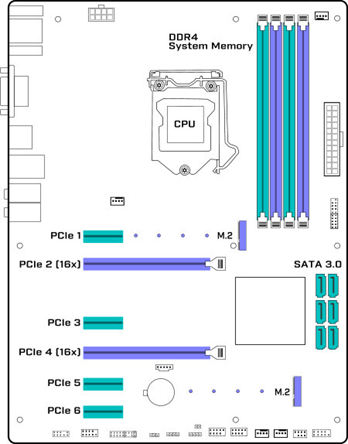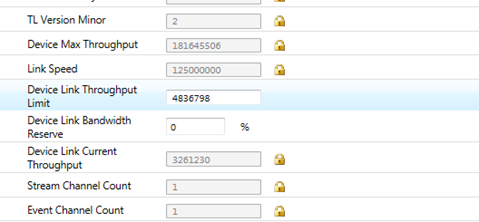|
||||||||||||||||||||||||||||||||||||||||||
|
||||||||||||||||||||||||||||||||||||||||||
Best practices to ensure optimal performance of a single-camera 10GigE vision system
Back
to Newsletter
Go Teledyne FLIR
|
10GigE Best Practices: Setting Up a Single-camera System
|
Understanding how to configure a 10GigE single-camera system is a worthwhile skill to learn across a range of technical professions. Whether you're an experienced engineer, building a 10GigE vision system, or just tech-minded, in this article we'll look at best practices and techniques for setting up a single-camera 10GigE system. Please note: this article has been written in March 2024 and published in the Adept Turnkey Machine Vision newsletter in May 2024. All technical details reference the technology as it stands at this time, and given the rate of advancement in this area, the advice may have changed at some short time in the future. Please contact Adept Turnkey for current advice at time of reading if required. |
| Best practices for host system configuration |
Mass Storage Most recent motherboards are compatible with M.2 SSDs. The M.2 standard employs either a PCIe 2.0 x4 or PCIe 3.0 x4 interface and offers sufficient bandwidth to match that of a 10GigE camera. However, the sequential write speed remains constrained by flash memory technology. As of early 2018, the Samsung NVMe SM951 series stands out as the M.2 SSD with the highest write speed, achieving a sequential write speed of 5.2 Gbit/sec. Memory Bandwidth
|
 |
| Fig. 1. Dual-channel memory delivers greater performance than single-channel configuration. |
While your system should detect and activate a dual-channel memory configuration automatically, it's advisable to confirm and enable this setup in the BIOS if required. |
 |
| Fig 2. Examples of valid dual-channel memory configurations. |
Software Development Kit (SDK) Increasing the Stream Default Buffer Count creates more software buffers. This will improve system performance at the expense of consuming system memory. Buffer size is proportional to image size, so stream buffers for higher-resolution cameras will require more memory. PCIe Slot Configuration PCIe slots may share bandwidth with other peripherals such as USB ports or other PCIe devices. To determine which PCIe slots operate at full bandwidth, please see the detailed specifications in your motherboard’s user guide. |
 |
| Fig 3. Common locations of PCIe, memory and storage connectors on an ATX form factor motherboard. |
As 10GBASE-T is increasingly adopted for consumer products, a wide range of NICs has become available. Third-party testing has shown that not all 10GBASE-T NICs can deliver the full 10GigE bandwidth. The ACC-01-1106 or ACC-01-1107 from Teledyne FLIR sold by Adept Turnkey has been thoroughly tested and validated for use with the Oryx camera. Best Practices for cabling For distances less than 30 meters, CAT5e will support a 10GigE link speed. For distances greater than 30m, CAT6A should be used. CAT6A cables have more robust shielding than CAT5e and may work better over short distances in environments prone to electromagnetic interference. Best practices for FLIR camera settings To ensure reliable performance, the available interface bandwidth must be shared between the cameras. Exceeding the bandwidth of the interface between the switch and the host will result in packet loss and dropped frames. |
 |
| Fig. 4. Setting the Device Link Throughput Limit to allocate interface bandwidth |
The recommended method for setting camera bandwidth limits is with the Device Link Throughput Limit control. Once the Device Link Throughput is set, the camera will restrict the maximum frame rate to ensure it does not exceed its allocated bandwidth. |
 |
| Fig. 5. Device link throughput setting in the SpinView GUI |
 |
| In the SpinView GUI, the Device Link Throughput Limit setting can be found under the Device Control section in the feature browser or using the search bar. |
Need
more information on single camera 10GigE Vision systems? Please
email Adept Turnkey or call our offices |
|
If you like this page, please recommend and share it. |
|||
| More | |||



